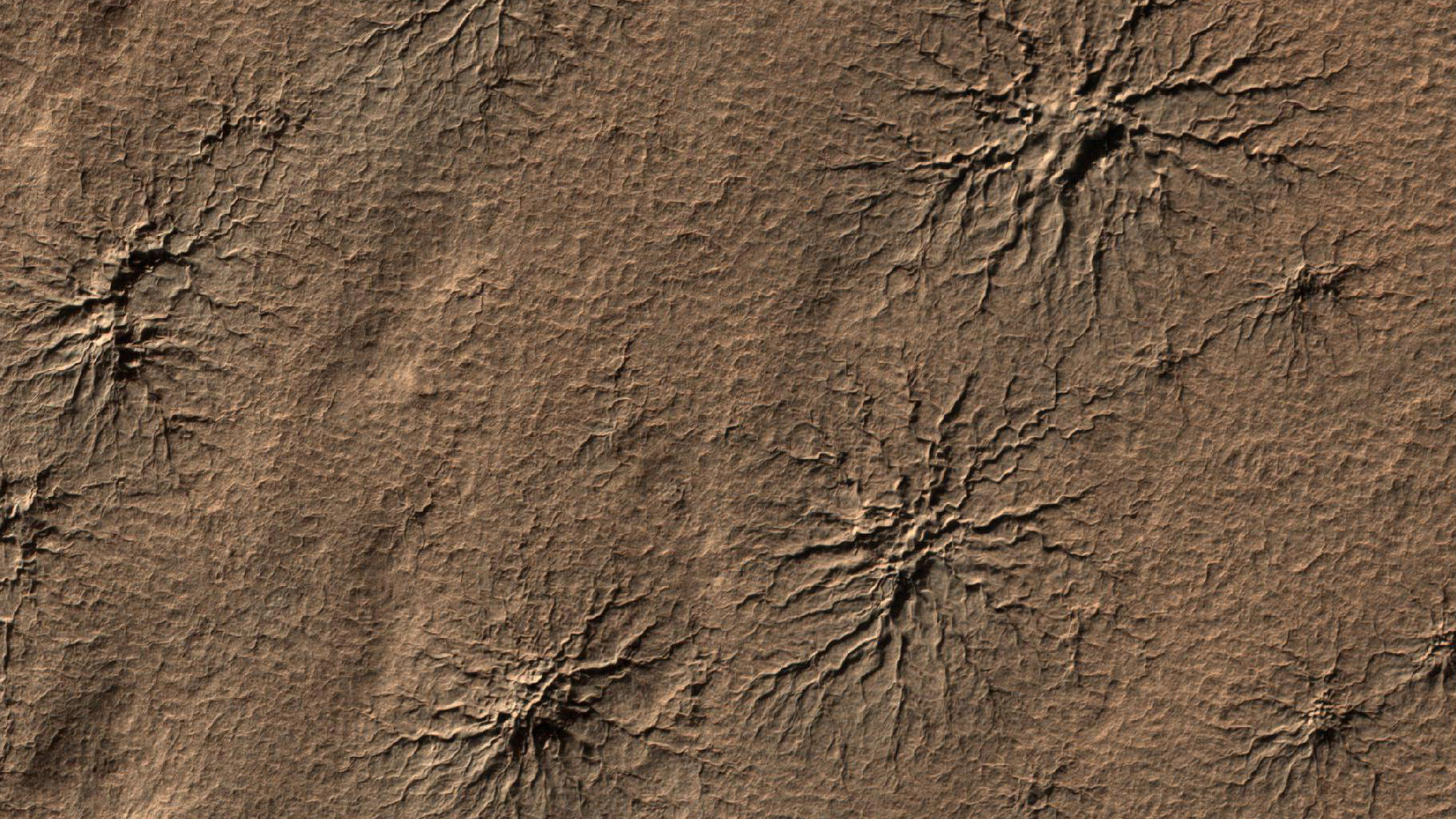Since discovering them in 2003 via images from orbiters, scientists have marveled at spider-like shapes sprawled across the southern hemisphere of Mars. No one is entirely sure how these geologic features are created. Each branched formation can stretch more than a half-mile (1 kilometer) from end to end and include hundreds of spindly “legs.” Called araneiform terrain, these features are often found in clusters, giving the surface a wrinkled appearance.
The leading theory is that the spiders are created by processes involving carbon dioxide ice, which doesn’t occur naturally on Earth.
The study confirms several formation processes described by what’s called the Kieffer model: Sunlight heats the soil when it shines through transparent slabs of carbon dioxide ice that built up on the Martian surface each winter. Being darker than the ice above it, the soil absorbs the heat and causes the ice closest to it to turn directly into carbon dioxide gas — without turning to liquid first — in a process called sublimation (the same process that sends clouds of “smoke” billowing up from dry ice). As the gas builds in pressure, the Martian ice cracks, allowing the gas to escape. As it seeps upward, the gas takes with it a stream of dark dust and sand from the soil that lands on the surface of the ice.
When winter turns to spring and the remaining ice sublimates, according to the theory, the spiderlike scars from those small eruptions are what’s left behind.



They took it all too far…